To use a clothes iron, fill the water reservoir, plug it in, select the appropriate temperature setting, and press the steam button when needed. Position the iron over the garment and move it in a smooth, back-and-forth motion to remove wrinkles effectively.
Ironing clothes is a simple yet essential task in maintaining a polished appearance and preserving the quality of your garments. By following a few straightforward steps, you can ensure that your clothes are wrinkle-free and presentable for any occasion. With the right technique, you can effortlessly achieve crisp, professional-looking results.
Whether you’re preparing for a job interview or getting ready for a special event, understanding how to use a clothes iron properly will help you keep your wardrobe looking its best. Let’s explore the straightforward process of using a clothes iron to achieve wrinkle-free clothing.
The Basics Of Ironing Choosing The Right Iron
When it comes to choosing the right iron for your needs, it’s important to consider factors such as performance, features, and durability. Look for an iron with adjustable heat settings to cater to different types of fabrics. Consider the steam function, as it can help remove stubborn wrinkles efficiently. A stainless steel soleplate is a great choice, as it distributes heat evenly and glides smoothly over fabric, preventing sticking and burning. A lightweight and ergonomic design can make the ironing process less tiring, ensuring you can iron clothes with ease.
Understanding Fabric Labels
Before you start ironing, it’s essential to understand the fabric labels on your clothing. Take note of the recommended ironing temperature for each type of fabric, as ironing at the wrong temperature can damage the material. Here’s a quick reference guide for some common fabric labels:
| Fabric | Ironing Temperature |
|---|---|
| Cotton | High heat (around 400°F) |
| Polyester | Low to medium heat (around 300-350°F) |
| Silk | Low heat (around 250°F) |
By paying attention to fabric labels and setting the iron to the appropriate temperature, you can ensure that your clothing remains in pristine condition while effectively removing wrinkles.
Setting Up Your Ironing Station
To set up your ironing station effectively, first, find a sturdy, flat surface and cover it with a heat-resistant pad. Next, adjust your iron to the appropriate temperature for the fabric and fill the water reservoir if necessary. Finally, ensure proper ventilation and keep a spray bottle nearby for stubborn wrinkles.
Preparing The Ironing Board
To start your ironing session off right, ensure that your ironing board is set at a comfortable height and has a smooth, padded cover to protect your garments. Adjust the ironing board to a suitable working height, allowing for efficient and strain-free ironing. For better stability, make sure the legs of the board are locked securely into place before proceeding. Once the ironing board is set up, check the surface for any sharp edges or protruding parts that may snag or damage your clothing items. Smooth out the padding and cover to eliminate any creases or lumps that could transfer onto your garments during ironing.
Filling The Water Reservoir
If your iron has a steam feature, it’s essential to fill the water reservoir before use. Unplug the iron and allow it to cool down if it has been in use. Locate the water inlet and remove the cap. Fill the reservoir with distilled water, avoiding overfilling to prevent water spillover during ironing. Once filled, secure the cap firmly to avoid leaks. Position the iron vertically and plug it in, allowing it to reach the desired temperature before commencing ironing. This ensures sufficient time for the water to heat up and produce steam, enhancing the ironing process.
Step-by-step Ironing Guide Sorting Clothes
By Fabric Type
Ironing Cotton And Linen
When ironing cotton and linen clothing, it’s important to use the appropriate heat setting to prevent scorching the fabric. Start by sorting the garments based on the fabric type and their ironing temperature requirements. Refer to the garment care label for specific instructions on the recommended heat settings.
- Sort the cotton and linen items into a separate pile from delicate fabrics.
- Preheat the iron to the appropriate temperature for cotton and linen, usually the high or cotton setting.
- Adjust the steam settings based on the fabric’s needs. Use steam to remove wrinkles from cotton and linen materials, ensuring the iron’s water reservoir is filled with clean water.
- Iron the garments in sections, working from one side to the other, and pressing firmly but not excessively hard. Take care around buttons and zippers to avoid damaging the fabric.
- Hang or fold the items immediately after ironing to prevent new wrinkles from forming.
Ironing Silk And Delicate Fabrics
When ironing silk and delicate fabrics, a gentle approach is necessary to avoid damage. These fabrics typically require lower heat settings and may benefit from using a pressing cloth to protect the material from direct heat exposure. Always check the care label for specific instructions on ironing these items.
| Fabric Type | Heat Setting |
|---|---|
| Silk | Low to Medium |
| Delicate Fabrics | Low |
- Set the iron to the appropriate heat level for silk or delicate fabrics, typically a lower setting to prevent damage.
- Use a pressing cloth or a clean, lint-free cotton cloth to cover the fabric while ironing to protect delicate materials from direct heat.
- Iron gently and avoid excessive pressure to prevent stretching or distortion of the fabric.
- Hang or fold the items immediately after ironing to maintain the fabric’s shape and prevent wrinkles.
Helpful Ironing Techniques
Ironing clothes can sometimes be a daunting task, and knowing the right techniques can make a significant difference. Whether it’s using steam effectively or tackling stubborn wrinkles, mastering these ironing techniques can help you achieve that crisp, polished look for your garments. Here are some helpful tips to enhance your ironing skills.
Using Steam Effectively
Steam is a versatile tool when it comes to ironing. It helps to relax the fabric and smoothen out wrinkles efficiently. To use steam effectively, fill the iron’s water reservoir with distilled water for better performance. Ensure the iron is set to the appropriate steam setting for the fabric being ironed, and hold the iron a few inches above the fabric while pressing the steam button. This process helps in releasing the wrinkles and achieving a professional finish.
Removing Stubborn Wrinkles
Stubborn wrinkles can be a common frustration while ironing. To tackle them effectively, start by identifying the trouble spots and applying a gentle mist of water using a spray bottle. This added moisture will assist in loosening the stubborn creases. Additionally, for more delicate fabrics, place a clean, thin cotton cloth over the area before ironing to protect the fabric from direct heat, ensuring the wrinkles are removed without causing damage.
Iron Safety Tips And Best Practices
Using a clothes iron correctly is essential for safety and achieving great results. Let’s take a look at some safety tips and best practices to ensure a smooth and risk-free ironing experience.
Preventing Accidental Burns
Preventing accidental burns is crucial when using a clothes iron. Here are some measures to minimize the risk:
- Always keep the iron out of reach of children and pets.
- Use a heat-resistant ironing board cover to prevent burns to the surface.
- When not in use, unplug the iron and allow it to cool down before storing it.
- Be careful when handling the iron, making sure to avoid direct contact with the hot surface.
Proper Iron Storage
Proper iron storage is essential for safety and longevity. Consider the following practices:
- Store the iron in a safe and dry location, away from moisture or extreme temperatures.
- Keep the iron cord neatly coiled and secured to prevent tripping hazards or damage to the cord.
- Ensure the iron is completely cool before storing it to prevent accidental burns or damage to surrounding objects.
Troubleshooting Common Ironing Issues
When ironing your clothes, it’s common to encounter a few issues that can leave you feeling frustrated. Understanding how to troubleshoot these common ironing problems can save you time and ensure that your garments come out looking crisp and flawless. Let’s delve into some practical solutions to address these issues and elevate your ironing game.
Dealing With Shiny Ironing Marks
Shiny ironing marks on garments can dampen your efforts to achieve a polished look. To combat this issue, try the following:
- Adjust the iron temperature to the fabric’s recommended setting to prevent excessive heat that may cause shine marks.
- Use a pressing cloth or a clean, damp cloth to protect delicate fabrics from direct contact with the iron.
- Iron clothes inside out to minimize the risk of shiny marks appearing on the outer layer of the fabric.
Addressing Water Stains On Fabric
Water stains on fabric can result from using tap water in your iron. Here’s what you can do to resolve this:
- Use distilled water in your iron to prevent mineral buildup and reduce the risk of water stains.
- If water stains have already appeared on the fabric, try using a fabric steamer to gently distribute steam across the affected area to even out the stain.
- If the fabric allows, gently hand wash the stained area using a mild detergent and tepid water, then air dry to remove the stain.
Frequently Asked Questions On How To Use A Clothes Iron
How Do I Choose The Right Temperature Setting For Ironing?
To choose the right temperature setting for ironing, always refer to the garment’s care label. Start with a low temperature for delicate fabrics like silk and gradually increase for cotton and linen. Test a small inconspicuous area first to avoid damaging the fabric.
What Are The Best Tips For Ironing Different Types Of Fabrics?
When ironing different fabric types, use a pressing cloth for delicate fabrics, iron inside out for dark-colored items, and use steam for stubborn wrinkles. For wool, use a steam iron on a low setting to avoid flattening the fibers.
Why Is It Important To Use Distilled Water In The Steam Iron?
Using distilled water in the steam iron is crucial to prevent mineral deposits that can clog the iron’s vents. Tap water contains minerals that can build up and affect the iron’s performance over time. Distilled water ensures consistent steam output for efficient ironing.
How do I set the temperature on my clothes iron?
Refer to the garment’s care label for recommended temperature settings, then adjust the iron accordingly.
Can I use tap water in my iron?
It’s advisable to use distilled water to prevent mineral buildup and extend the life of your iron. Check your iron’s manual for specific water requirements.
What’s the proper way to iron delicate fabrics?
Place a thin cloth over delicate fabrics to protect them from direct heat. Use a lower temperature setting and avoid excessive pressure.
How do I prevent water spots on clothes while ironing?
Ensure the water reservoir is clean and filled with distilled water. Ironing at the appropriate temperature for the fabric also helps minimize water spotting.
Is it necessary to empty the water reservoir after each use?
It’s a good practice to empty the reservoir if you won’t be using the iron for an extended period. This helps prevent mold and mineral buildup.
Can I iron clothes with intricate details or embellishments?
Yes, but turn the garment inside out to protect the details. Use a lower temperature and be cautious around embellishments to avoid damage.
How should I clean the soleplate of my iron?
Wipe the soleplate with a damp cloth when it’s cool. For stubborn stains, use a mixture of vinegar and water. Avoid abrasive cleaners to prevent damage.
What’s the correct ironing technique for collars and cuffs?
Start with these areas first while the iron is at a slightly higher temperature. Use the pointed tip for precision on collars, and iron cuffs from the inside.
Can I use my iron on all types of fabrics?
Check the fabric care label to ensure compatibility. Different fabrics may require specific temperature settings and ironing techniques.
Why is my iron dripping water during use?
This could be due to overfilling the water reservoir. Only fill it to the recommended level to prevent water from dripping onto your clothes.
Conclusion
In a nutshell, mastering the art of using a clothes iron can make a significant difference in keeping your wardrobe looking fresh and well-groomed. By following these simple tips and techniques, you can achieve professional and crisp results while ensuring the longevity of your garments.
Embrace the process, practice, and patience, and soon your ironing game will be on point.


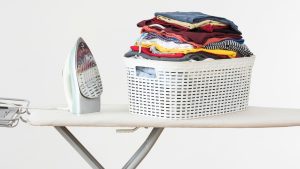
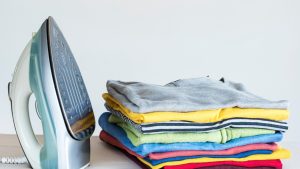


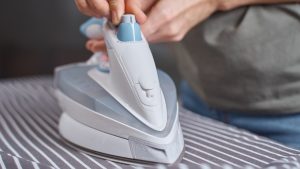
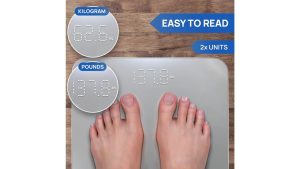
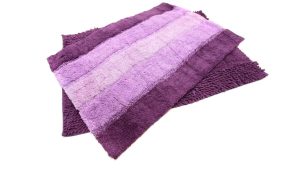


1 thought on “How to Use a Clothes Iron”